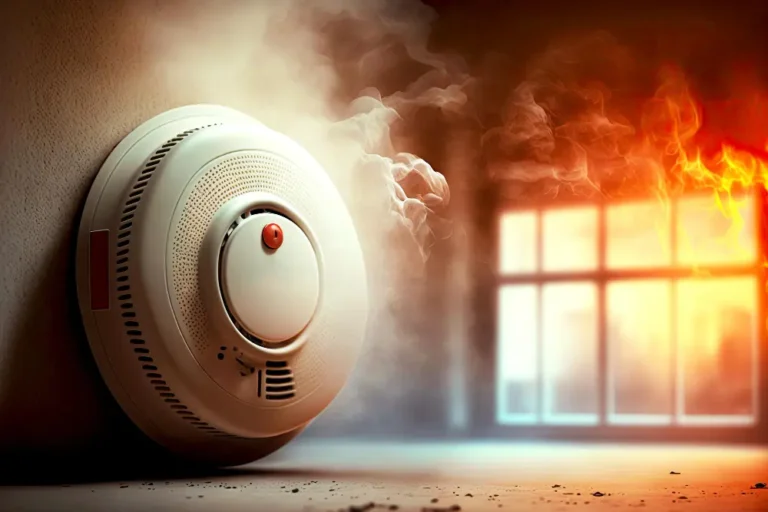The Difference Between Smoke Alarms and Fire Alarms
When it comes to fire safety, most people assume that smoke alarms and fire alarms are the same. However, while they may serve similar purposes, they are two different systems with distinct functions, designs, and capabilities. Understanding the difference between smoke alarms and fire alarms can help you make better decisions when it comes to installing fire protection in your home, office, or commercial building.
In this guide, we’ll explore what each system does, how they operate, where they are typically used, and which is better suited for different environments.
What Is a Smoke Alarm?
A smoke alarm is a standalone device designed to detect smoke particles in the air and sound a local audible alert when smoke is detected. It is most commonly used in residential homes and small offices.
There are two main types of smoke detection technology used in smoke alarms:
- Ionization Smoke Alarms: These detect fast-flaming fires. They are quicker at detecting fires that produce little visible smoke but lots of heat.
- Photoelectric Smoke Alarms: These detect smoldering fires, which produce more visible smoke and less heat.
Some modern smoke alarms come with dual-sensor technology, combining both ionization and photoelectric sensors to improve detection accuracy.
Key Features of Smoke Alarms:
- Battery-operated or hardwired (with backup battery)
- Emits loud beeping or chirping sound when smoke is detected
- Designed for small-scale use
- Inexpensive and easy to install
- No central control panel or network
What Is a Fire Alarm?
A fire alarm system is a more advanced, interconnected safety system typically used in commercial buildings, schools, hospitals, factories, and large residential complexes.
Unlike smoke alarms, fire alarm systems include multiple components working together:
- Smoke detectors and heat detectors
- Pull stations (manual activation)
- Control panel (brain of the system)
- Alarm notification devices (horns, strobes, sirens)
- Communication with emergency services (optional in monitored systems)
Key Features of Fire Alarms:
- Wired into the building’s electrical system
- Can be networked across multiple floors or buildings
- Centralized control panel manages alerts and responses
- Can trigger automatic suppression systems (like sprinklers)
- Can be connected to emergency responders (monitored systems)

Smoke Alarm vs. Fire Alarm: Key Differences
Feature | Smoke Alarm | Fire Alarm |
Type | Standalone device | Full-scale system |
Detection | Smoke only | Smoke, heat, flame, gas |
Installation | Easy, DIY-friendly | Requires professional setup |
Alert Method | Local alarm only | Local + centralized alert system |
Application | Homes, small offices | Large buildings, commercial sites |
Monitoring | No | Optional (can notify authorities) |
Cost | Low | Medium to high (based on complexity) |
Which One Do You Need?
For Homeowners:
A smoke alarm is usually sufficient for residential fire safety. Most fire codes recommend placing a smoke alarm in each bedroom, hallway, and on every level of the house. Regular battery checks and proper placement ensure maximum protection.
For Businesses and Commercial Buildings:
A fire alarm system is required by law in most jurisdictions for commercial buildings. These systems provide a higher level of protection by integrating multiple detection methods, notifying occupants and emergency services, and even triggering fire suppression systems.
Common Myths About Smoke and Fire Alarms
1. “If I have smoke alarms, I don’t need a fire alarm system.”
Not true. Smoke alarms work independently and only sound a local alert. In large or multi-unit buildings, this may not be enough to warn everyone or coordinate a proper evacuation.
2. “Fire alarms are only for factories or huge malls.”
False. Many medium-sized offices, schools, and apartment complexes require fire alarm systems to meet local safety regulations.
3. “Smoke alarms work fine even if I install them in the kitchen.”
This can be misleading. Kitchens often produce smoke during cooking, which may cause false alarms. It’s better to use heat detectors in kitchens and install smoke alarms nearby (like in hallways).
Modern Innovations in Fire Safety Devices
Both smoke alarms and fire alarm systems are evolving with technology. Some recent advancements include:
- Smart Smoke Alarms: Wi-Fi enabled devices that send alerts to your phone
- Voice Alerts: Instead of beeping, the device announces, “Smoke detected in the living room”
- Integrated Fire Systems: Fire alarms now connect with HVAC systems, security cameras, and emergency lighting for complete building safety
These upgrades help ensure faster response times and better coordination during a fire emergency.
Also read: Why High-Rise Buildings Need Advanced Security Systems
Importance of Regular Maintenance
Whether you have a smoke alarm or a fire alarm system, maintenance is critical. Here are a few tips:
- Test smoke alarms monthly using the test button
- Replace batteries every 6–12 months, or as recommended by the manufacturer
- Vacuum sensors lightly to remove dust buildup
- Get professional inspections for fire alarm systems every 6 months or annually, depending on usage
Failing to maintain your fire detection devices can result in delayed alerts or false alarms, putting lives and property at risk.
Final Thoughts
Understanding the difference between smoke alarms and fire alarms isn’t just about knowing the technical specs—it’s about protecting people, property, and peace of mind.
If you’re a homeowner, invest in reliable smoke alarms and install them correctly. If you’re managing a commercial or multi-residential building, consult a certified fire safety professional to install and maintain a fire alarm system that meets all regulatory codes.
Both types of systems serve an essential role in modern fire safety. Choosing the right one depends on your specific needs—but always remember: preparedness saves lives.
Frequently Asked Questions (FAQs)
